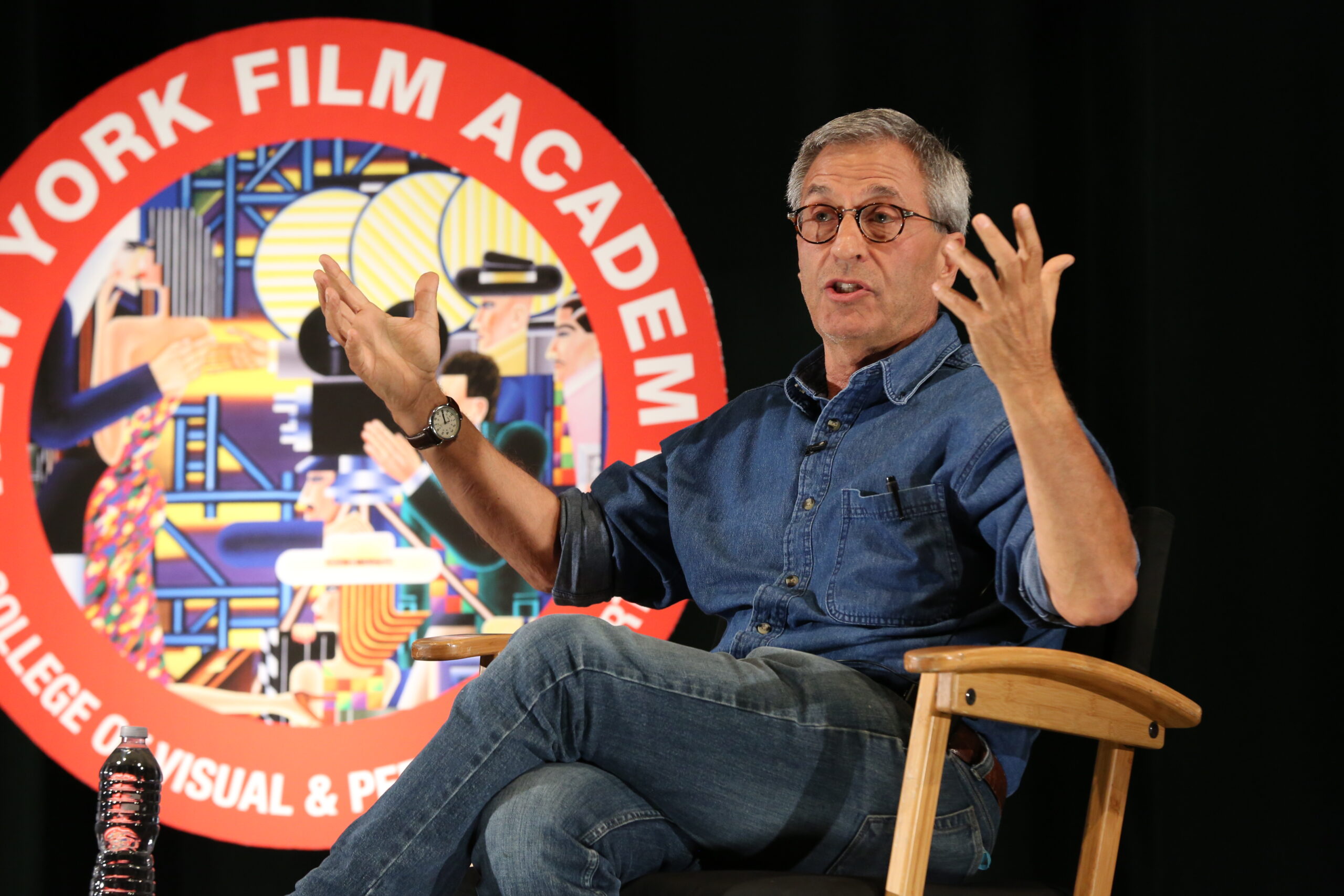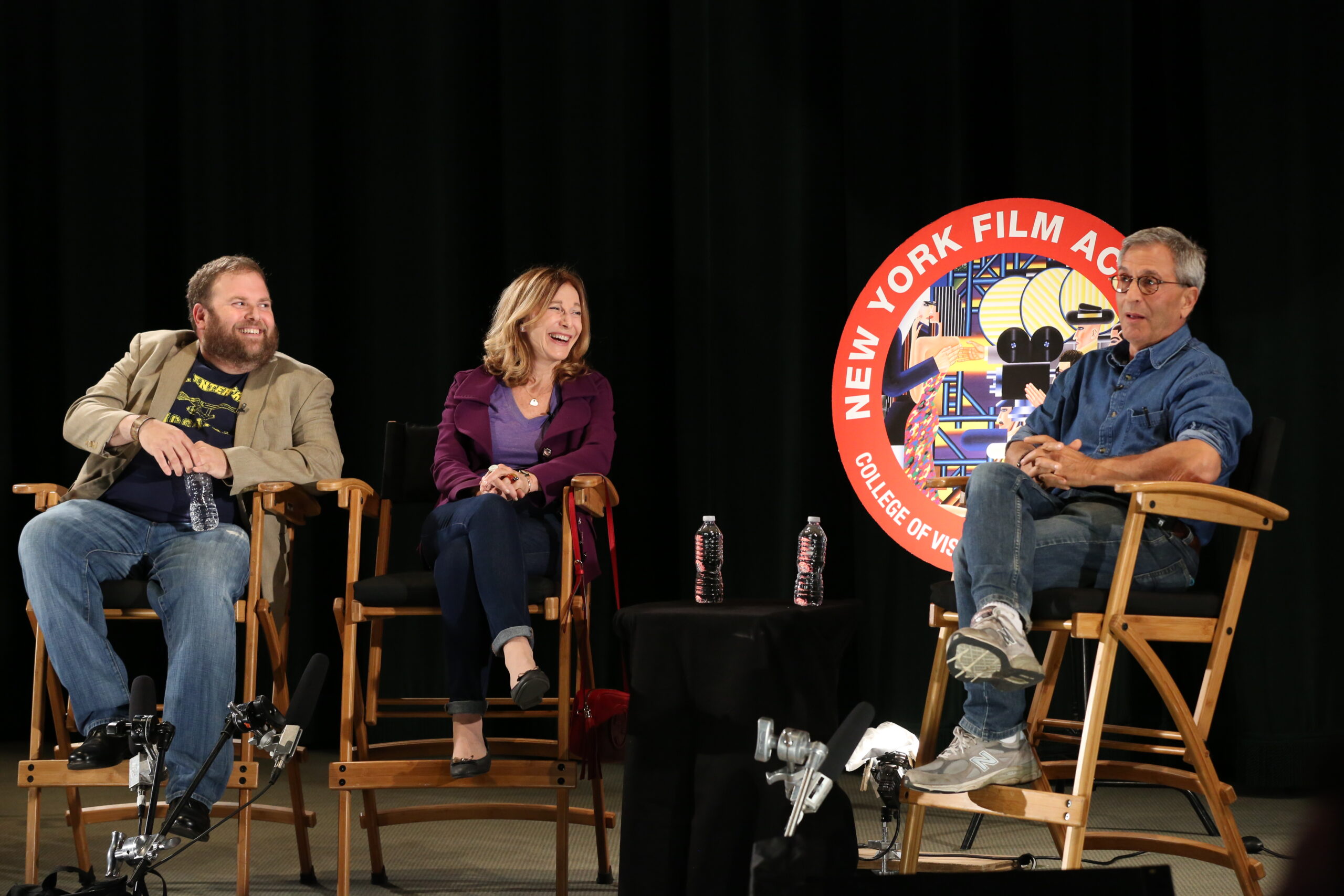Famed writer and director, and the man credited with saving Star Trek, Nicholas Meyer came to New York Film Academy to screen Star Trek II: Wrath of Khan. New students filed onto the historic Warner Bros lot to discuss his classic film as part of the New York Film Academy’s exclusive Guest Speaker Series for students and alumni. Meyer sat in for an informative Q&A with Producer, and moderator, Tova Laiter of Varsity Blues and Glory.

Meyer hadn’t been a fan of Star Trek before he was asked to direct. “When I saw it on TV, I saw the guy with pointy ears and I just kept going,” Meyer said. But then Harve Bennett, a friend of Meyer’s and one of the film’s producers, handed Meyer the script.
“There were a lot of things I didn’t understand… But, I was aware later, that it did remind me of something I rather liked. It took me a while to figure it out what it was. Then I remembered the books I read when I was twelve or thirteen about Captain Horatio Hornblower from the C.S. Forester novels. He was a British sea captain during the Napoleonic Wars and he has a girl in every port.”
From those naval stories, Meyer simply placed the navy in space. He spoke to James Horner, the film’s composer, about including the sounds of famed naval composers such as W.C. Handy and Jean-Baptiste Lemire.

Other essential changes Meyer made to the series was setting a time period. “I put at the beginning: In the Twenty-Third Century because I thought my father wouldn’t have a clue what he was seeing if it didn’t say something. Then, I realized… I was really putting it in for myself because I was trying to explain it. People say it’s science fiction, but it’s really rather Earthbound in terms of its subject matter.”
Once the naval themes were cemented in his mind, Meyer knew what the story needed to be. And he let NYFA students in on a secret, “I wrote the script. There were five drafts, but they were really five different attempts to get a second Star Trek film.”
There was a fifth draft coming in and Meyer was getting excited. Five months went by and he hadn’t heard anything. Meyer called Harve Bennett and asked him to send each draft over. After a long discussion, they decided to make a list of everything they liked in each draft. Then Meyer would make a final script with one caveat; he had to have the script finished in twelve days.
So then Meyer made what he called a “big mistake.” Producers told him they couldn’t even write his deal in twelve days, so he fell on the sword. He said to forget the deal and wrote the script for free in twelve days.
When it came time to film, money was in short supply. The first film went way over budget, had multiple script changes daily, and never found its footing with audiences. A second splurge wouldn’t be allowed, so they recycled set, reused special effects, and reduced the number of sets and costumes. Because of these restrictions, the story of Khan was allowed to thrive.
On this note, he gave the students some advice, “All great artistic media rely for their success on something they leave out. Paintings do not move. Music has no intellectual content. Words are just code on a page. It is only when they intersect with the auditor, the viewer, the listener, that it comes alive. When you bring your imagination to it, the painting moves when it meets your eye. Beethoven’s Fifth becomes profound when it hits your ear. Otherwise, it’s just catguts and tubing. And the words that make you laugh or cry on the page is when you decode them. Movies alone… have the hideous capacity to do everything for you.”
Meyer put this thought into practical application, “So, as a director, not only am I working to make a little money go a long way by invoking people’s imagination, I am also at pains to leave things out of the movie to make your imagination kick in as opposed to simply presenting you with two hours of eye candy. When you’re making your movies, you have to look for ways to do things that may be counter-intuitive in order to get the audience to exercise their imaginations. Every time somebody points to something in a movie, you don’t have to show what they’re pointing to. When someone asks a question, the other person doesn’t have to answer it. You can leave things out, because the audience participates.”
New York Film Academy would like to thank Mr. Meyer for speaking with our students. You can read more about Meyer’s adventures and his thought on art in his books Views from the Bridge and The Seven Percent Solution.